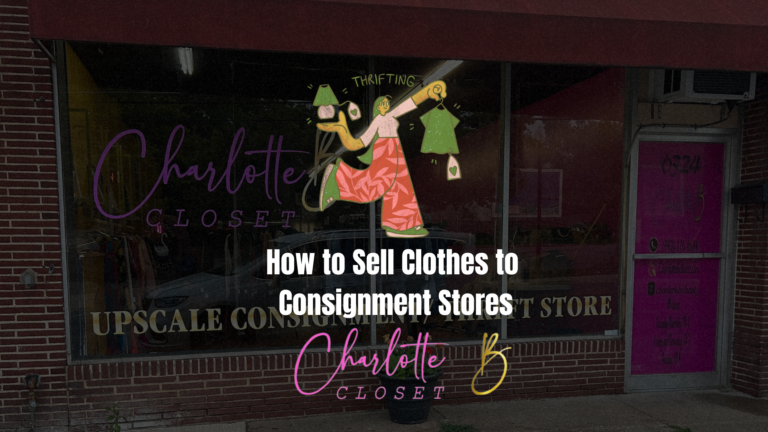Are Thrift Store Clothes Safe? – An Expert Guide to Ensuring Safety
In the world of sustainable and budget-friendly fashion, thrift shopping has made a significant mark. However, the question often arises, “Are thrift store clothes safe?”
Indeed, thrift store clothes are safe, but they require proper cleaning before use. Despite the initial “yuck” factor, it’s no different than buying new clothes. Just as you would wash a fresh piece from a regular retail store, you need to clean thrift store clothes before wearing them.
Are Thrift Store Clothes Safe? – Quick Guide
Yes, thrift store clothes are indeed safe to wear. However, it is important to remember that they must be cleaned thoroughly before use.
While it’s true that these clothes were previously owned, keep in mind that even brand-new clothes are tried on by numerous individuals in changing rooms before purchase.
In essence, the safety concern of used clothes is no different than that of new clothes. To ensure your safety and hygiene, washing and sanitizing thrift store clothes after purchase is always best.
We have written a dedicated guide on How To Get Thrift Store Smell Out Of Clothes – so you can read that as well.
Is it Safe to Wear Thrift Store Clothes?
The thought of wearing second-hand clothing can seem off-putting to some due to the so-called “ick” factor.
But when you think about it, even new clothes have been tried on by countless people before you purchase them.
The crucial point to consider here is the cleaning and sanitation process that thrift clothes undergo before they hit the store racks.
It’s a rigorous procedure involving sorting, washing, sanitizing, and, in some cases, repairing. This makes thrift store clothes just as safe to wear as new ones, if not safer.
New clothes from retail stores often come with their own set of safety concerns. For instance, many garments contain chemicals due to dyes, treatments, and the manufacturing process.
On the other hand, second-hand clothes have often been washed numerous times, significantly reducing the presence of these chemicals. It’s another point in favor of the safety of thrift store clothes.
Expert Views on Thrift Store Clothes Safety
From a public health perspective, wearing clothes from thrift stores is generally considered safe.
Numerous health experts and epidemiologists agree that the risk of disease transmission is extremely low.
The Centers for Disease Control and Prevention (CDC) states that most viruses and bacteria cannot survive long on the surface of fabrics.
When donated clothes arrive at a thrift store, they undergo thorough cleaning and sanitation. Clothes are meticulously inspected, cleaned, and sorted.
The cleaning process typically involves hot water and disinfectants, ensuring that any germs are effectively eliminated. These stringent measures underscore the safety of buying and wearing thrift store clothes.
Precautions with Thrift Store Clothes
While thrift store clothes are generally safe, some potential risks should not be overlooked. Items may have been in various environments that could contaminate them. Infrequently, there could be instances of pests like bed bugs. Therefore, it’s always prudent to wash and dry thrift store clothes thoroughly before wearing them.
While risks are minimal, certain items demand more caution. Intimate apparel, bathing suits, or baby clothing should ideally be purchased new due to the potential for higher bacteria levels. If buying these from thrift stores, they should be sanitized properly before use.
Should You Wear Thrift Store Clothes Without Cleaning?
No matter how clean thrift store clothes may appear, it is always advisable to wash them before wearing them. This practice ensures any remaining dirt, allergens, or potential irritants are removed, further guaranteeing your safety.
Skipping the wash cycle can lead to skin irritation, allergies, or fungal infections, especially for individuals with sensitive skin. Therefore, it’s crucial to sanitize thrift clothes before wearing them.
Most seasoned thrifters make it a routine to wash their haul before adding it to their wardrobe. Some go the extra mile by using fabric sanitizers or steam cleaning for added safety.
How to Clean and Sanitize Thrift Store Clothes
It’s important to note that cleaning and sanitizing your thrift store finds isn’t just a recommendation; it’s a necessity. To ensure that your second-hand clothes are as clean and safe as possible, follow these steps:
- Inspection: Check each item for any visible stains, smells, or damages. Don’t forget to check the pockets too!
- Separation: Separate clothes by color to prevent any color bleeding. Also, sort them based on fabric type. Delicate materials will need a gentler wash cycle compared to sturdy fabrics like denim or cotton.
- Choosing the Right Detergent: Use a high-quality detergent for washing. If you want to ensure a higher level of cleanliness, consider adding a disinfecting laundry additive to your wash cycle.
- Wash Settings: Wash clothes using the warmest water setting appropriate for the fabric type. Warm water helps to kill bacteria and other microbes that may be present on the clothes.
- Drying: Dry clothes on high heat if the care label allows. The heat from the dryer can help to further sanitize the clothes.
Tips for Dealing with Different Types of Materials
Thrift store clothes come in a wide range of materials. Each material requires a specific type of care to maintain its condition and to ensure it’s cleaned effectively.
- Cotton: Cotton clothes are sturdy and can generally withstand high washing temperatures, which is effective for sanitization.
- Synthetic Fibers: Clothes made from synthetic materials such as polyester, nylon, or spandex should be washed in warm water.
- Silk: Silk is a delicate material that might need a gentle wash cycle. Consider hand washing silk items or using a gentle cycle with a detergent designed for delicates.
- Wool: Wool should be either hand washed in cool water with mild soap or taken to a professional cleaner. Hot water or a rough wash cycle can cause woolen items to shrink or lose their shape.
Sustainability and Ethical Benefits of Thrift Store Shopping
Thrift store shopping isn’t just a means to snag a bargain, it also offers a multitude of benefits for the planet and society.
- Reducing Environmental Impact: Every garment that finds a new home through thrift shopping means one less item in a landfill. It also means less demand for new items, which reduces the resources used for manufacturing, transportation, and packaging.
- Promoting Circular Economy: Thrifting encourages a circular economy where items are reused, recycled, and kept out of landfills for as long as possible. This lessens the demand for new goods and helps to conserve resources.
- Ethical Shopping: Many mainstream clothing brands have been exposed for their unethical practices, including child labor, poor working conditions, and unfair wages. By choosing to thrift, you opt out of supporting these practices, promoting a more equitable fashion industry.
- Community Support: Thrift stores often support local communities, either by providing jobs or by directing their profits to local charities. By shopping at these stores, you’re supporting your local community directly.
- Fostering Creativity and Individuality: Thrift shopping allows you to find unique, one-of-a-kind items that let you express your personal style. It promotes creativity and individuality, as it requires a keen eye and patience to find hidden gems.
Conclusion
Ultimately, thrift store clothes are not only safe but also present numerous ethical and environmental benefits.
The key is to ensure proper cleaning and sanitization before wearing your thrifty finds. By incorporating this practice, you contribute towards sustainable fashion, promote a more equitable industry, and express your unique style.
So the next time you’re thrift shopping, remember a thorough wash cycle is all that stands between you and your safe, trendy, and environmentally-friendly fashion statement.

Hi there, I’m Toni Whitten, but you might know me as LadyT. I’m a passionate entrepreneur and the proud owner of Charlotte B’s Closet, your go-to thrift store and upscale consignment.
Outside the store, I connect with the amazing women in my exclusive Facebook group, Housewives of Baltimore, boasting over 23k+ members.
In my free moments, I channel my passion for sharing genuine insights and helpful guides on various concerns through my blog at charlottebcloset.com.






